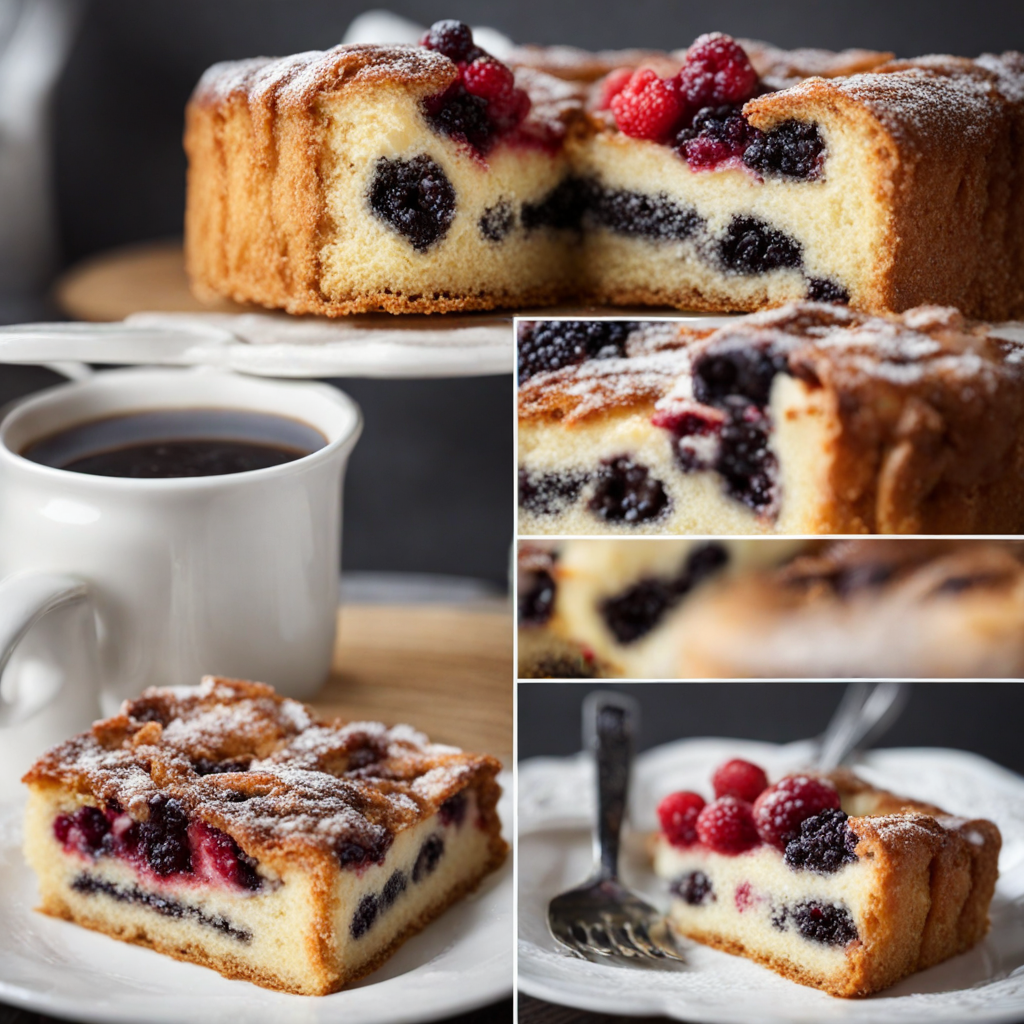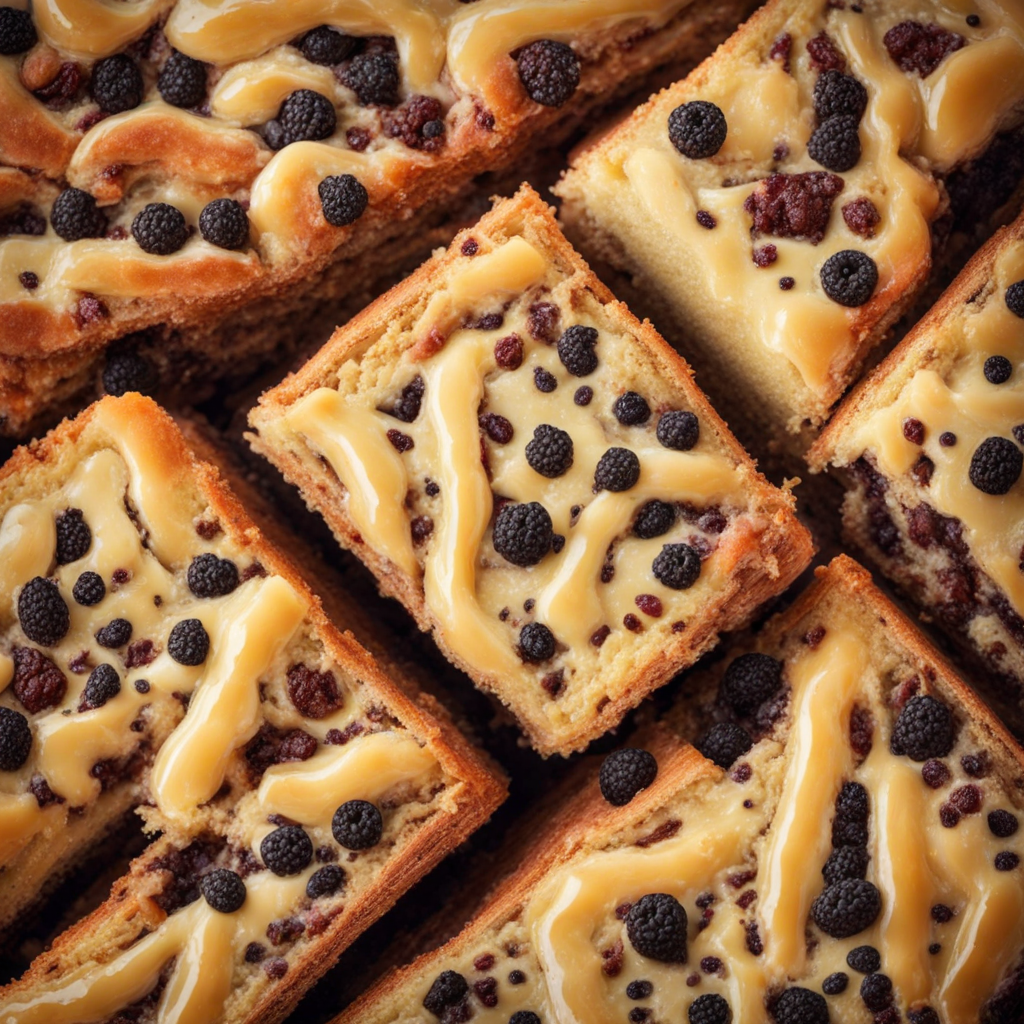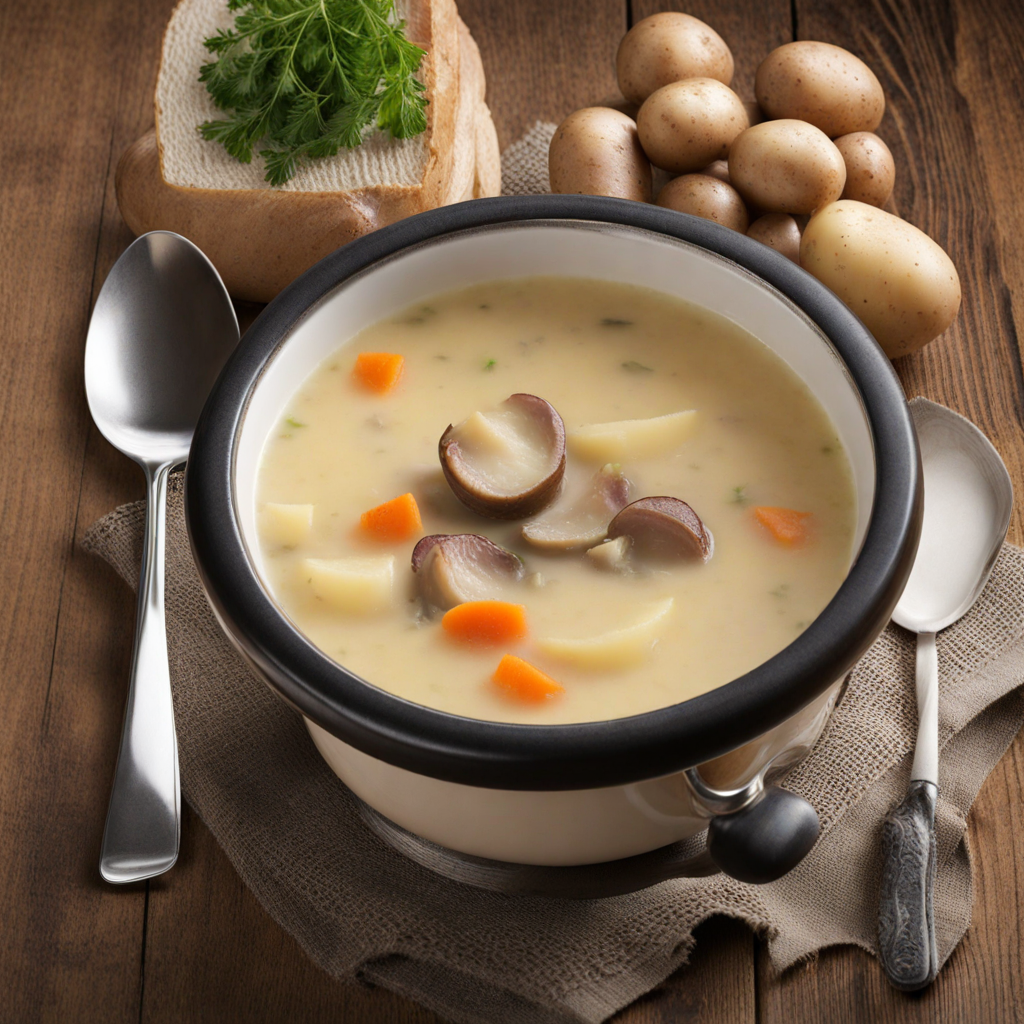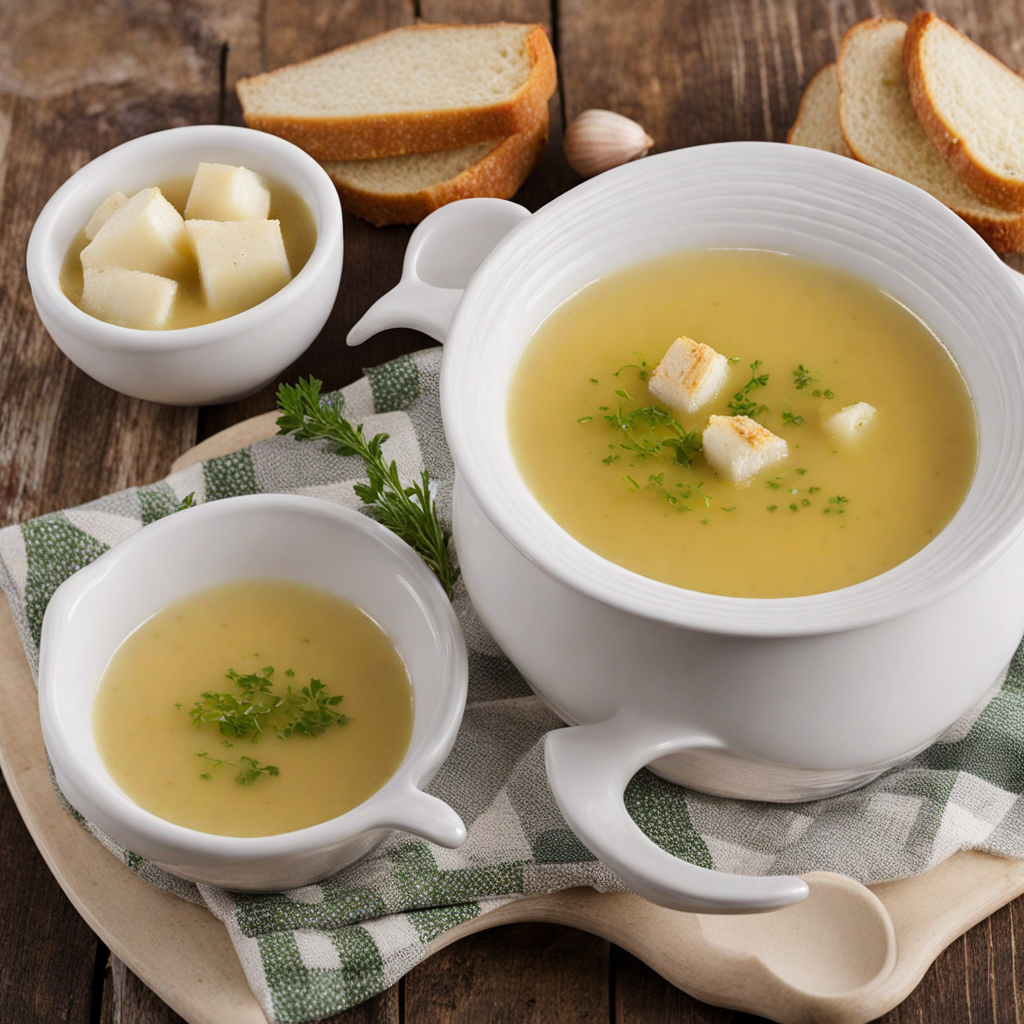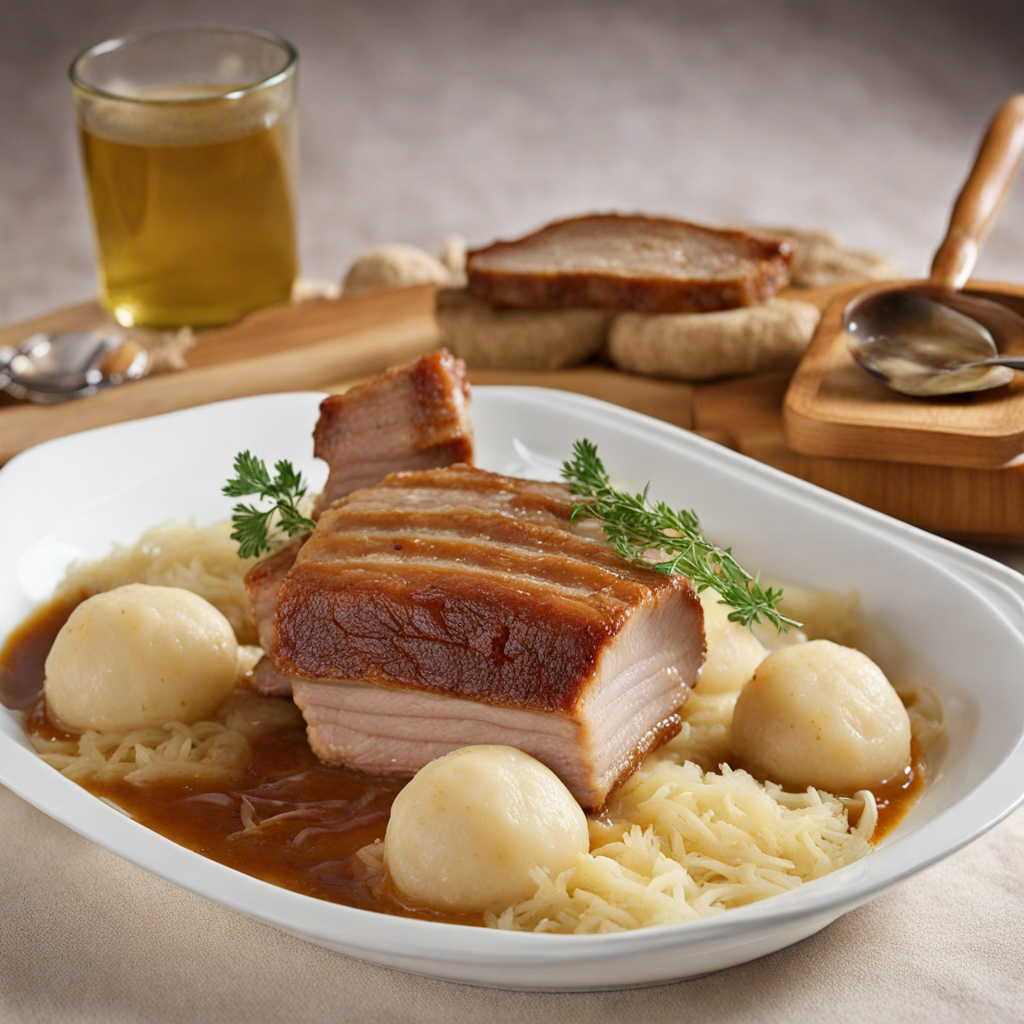Silesian Cake
Silesian Cake, known as 'Slezský koláč' in Czech, is a delightful pastry that hails from the Silesia region, which straddles the borders of the Czech Republic and Poland. This cake is characterized by its rich, buttery dough that's both soft and slightly sweet, providing a perfect base for a variety of delicious fillings. Often shaped into a round or oval form, the outer crust is typically adorned with a delicate golden hue, hinting at the warmth and comfort it promises to deliver with each bite. The fillings of Silesian Cake are what truly set it apart, as they can range from sweet to savory. A traditional version features a sweet poppy seed paste or a fruity filling made from plums, apricots, or cherries, offering a burst of flavor that complements the tender dough beautifully. Some variations incorporate creamy cheese or even a nut mixture, appealing to those who enjoy a more diverse palate. The balance of the filling with the soft pastry creates a delightful textural contrast that is both satisfying and indulgent. Silesian Cake is often enjoyed during festive occasions or family gatherings, served alongside tea or coffee, making it a beloved treat in Czech culture. Each bite encapsulates a sense of nostalgia, reminding many of home-cooked meals and the warmth of shared moments. For anyone looking to explore a new taste, Silesian Cake is not only a feast for the taste buds but also a journey into the rich culinary heritage of the Czech Republic, inviting you to savor its unique flavors and textures.
How It Became This Dish
Slezské Koláče: A Culinary Journey Through Time in the Czech Republic Introduction In the heart of Central Europe, the Czech Republic boasts a rich tapestry of culinary traditions, one of which is embodied in the delightful pastry known as Slezské koláče. These sweet, filled pastries are rooted deeply in the cultural and historical landscape of the region of Silesia, an area that has witnessed a confluence of various influences due to its strategic position at the crossroads of Europe. This essay explores the origin, cultural significance, and evolution of Slezské koláče, revealing how this beloved treat has become a symbol of Silesian identity and Czech culinary heritage. Origins and Historical Context Slezské koláče, or Silesian pastries, can trace their origins back to the medieval period, a time when bread-making was not just a daily chore but a vital part of community life. The word "koláč" itself comes from the Old Slavic term for "cake" or "pastry," and it has been a staple in Slavic cultures for centuries. These pastries were often made for special occasions, weddings, and religious celebrations, reflecting the agricultural calendar and the communal spirit of the people. The Silesian region, which encompasses parts of present-day Poland, the Czech Republic, and Germany, has experienced numerous shifts in political and cultural boundaries over the centuries. As a result, Slezské koláče have been influenced by various culinary traditions, including those of the Germans, Poles, and other ethnic groups that have inhabited the region. This melting pot of cultures contributed to the diverse fillings and preparation methods seen in Slezské koláče today. Cultural Significance Slezské koláče are more than just a sweet treat; they hold significant cultural and social value in the Czech Republic. Traditionally, these pastries symbolize hospitality and are often served to guests as a gesture of welcome. In Silesian households, they are frequently prepared for family gatherings, celebrations, and holidays, reinforcing the idea of togetherness and community. The fillings of Slezské koláče vary widely, reflecting local ingredients and personal preferences. Common fillings include poppy seeds, fruit preserves (like apricot or plum), sweet cheese, and nuts. Each filling tells a story of the region's agricultural bounty and the seasonal availability of ingredients. For example, poppy seeds have long been a symbol of prosperity and fertility in Slavic cultures, making them a popular choice for festive occasions. In religious contexts, Slezské koláče also play an important role. During Easter, for instance, special versions of these pastries are prepared to celebrate the resurrection of Christ. This connection to religious traditions further solidifies their place in the cultural fabric of Silesian and Czech life. Development Over Time As the centuries progressed, Slezské koláče adapted and evolved alongside the people and their changing lifestyles. The Industrial Revolution in the 19th century brought about significant shifts in food production and consumption. With urbanization, traditional baking methods began to give way to mass production, and Slezské koláče became more widely available in bakeries. This change, while making the pastries more accessible, also led to a loss of some of the artisanal qualities that characterized home-baked versions. The 20th century, marked by the two World Wars and subsequent political changes, further influenced the culinary landscape of the Czech Republic. During times of hardship, resourcefulness became essential, and bakers began to experiment with fillings and techniques as they adapted to scarcity. The resilience of the Silesian people shone through in their continued commitment to preserving their culinary heritage, ensuring that Slezské koláče remained a cherished part of their culture. In the post-World War II era, as the Czech Republic found itself under Communist rule, traditional foods like Slezské koláče were often promoted as symbols of national identity. Festivals celebrating regional cuisines emerged, and Slezské koláče became emblematic of Silesian culture within the broader context of Czech national pride. The revival of interest in traditional foods coincided with a growing movement towards organic and local ingredients, leading to a resurgence of artisanal baking. Modern Interpretations Today, Slezské koláče are enjoyed not only in Silesia but throughout the Czech Republic and beyond. They are increasingly found in bakeries, cafes, and even gourmet restaurants, where chefs put their unique spins on the classic recipe. Contemporary interpretations often incorporate modern techniques and global flavors while still honoring the traditional roots of the pastry. The rise of the internet and social media has played a significant role in popularizing Slezské koláče among younger generations. Food bloggers and enthusiasts share recipes, tips, and stories about their experiences making these pastries, fostering a sense of community and connection to cultural heritage. This revival is not just about nostalgia; it represents a broader movement towards valuing traditional craftsmanship and local ingredients. Culinary festivals celebrating Slezské koláče and other regional specialties have also gained popularity, attracting both locals and tourists. These events serve as a platform for bakers to showcase their skills, share stories, and educate attendees about the significance of these pastries in Silesian culture. Conclusion Slezské koláče are more than just a delicious pastry; they are a testament to the resilience and creativity of the Silesian people. From their humble origins in medieval kitchens to their modern interpretations in bakeries and homes, these pastries continue to embody the spirit of community, hospitality, and cultural identity. As they delight the taste buds of those who enjoy them, Slezské koláče remind us of the rich history and traditions that shape our culinary landscape. In every bite, one can savor not just the flavors of fruit, cheese, or poppy seeds, but also the stories of generations past, weaving a delicious narrative that is uniquely Silesian and distinctly Czech.
You may like
Discover local flavors from Czech Republic


